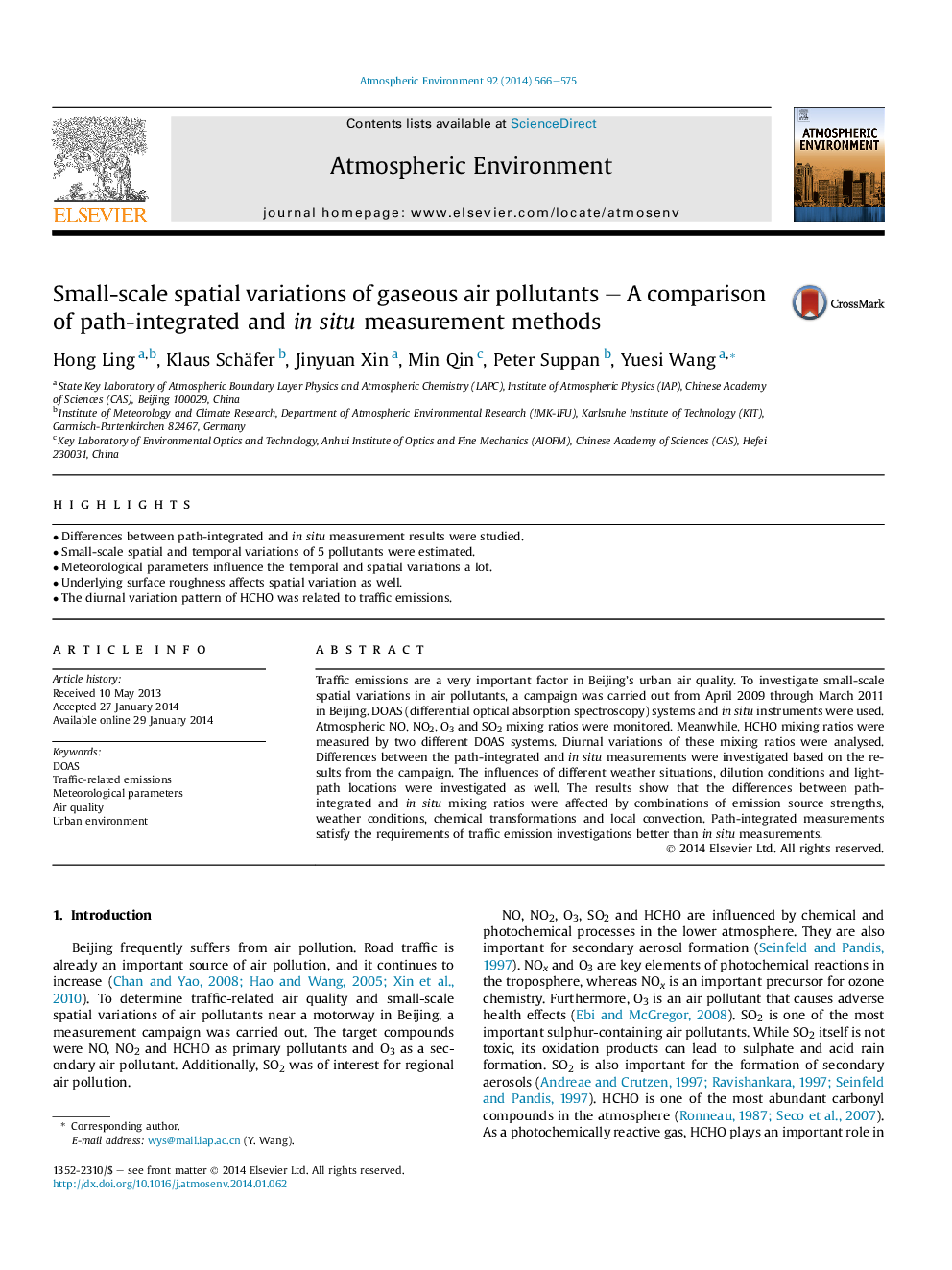| Article ID | Journal | Published Year | Pages | File Type |
|---|---|---|---|---|
| 6339436 | Atmospheric Environment | 2014 | 10 Pages |
â¢Differences between path-integrated and in situ measurement results were studied.â¢Small-scale spatial and temporal variations of 5 pollutants were estimated.â¢Meteorological parameters influence the temporal and spatial variations a lot.â¢Underlying surface roughness affects spatial variation as well.â¢The diurnal variation pattern of HCHO was related to traffic emissions.
Traffic emissions are a very important factor in Beijing's urban air quality. To investigate small-scale spatial variations in air pollutants, a campaign was carried out from April 2009 through March 2011 in Beijing. DOAS (differential optical absorption spectroscopy) systems and in situ instruments were used. Atmospheric NO, NO2, O3 and SO2 mixing ratios were monitored. Meanwhile, HCHO mixing ratios were measured by two different DOAS systems. Diurnal variations of these mixing ratios were analysed. Differences between the path-integrated and in situ measurements were investigated based on the results from the campaign. The influences of different weather situations, dilution conditions and light-path locations were investigated as well. The results show that the differences between path-integrated and in situ mixing ratios were affected by combinations of emission source strengths, weather conditions, chemical transformations and local convection. Path-integrated measurements satisfy the requirements of traffic emission investigations better than in situ measurements.
